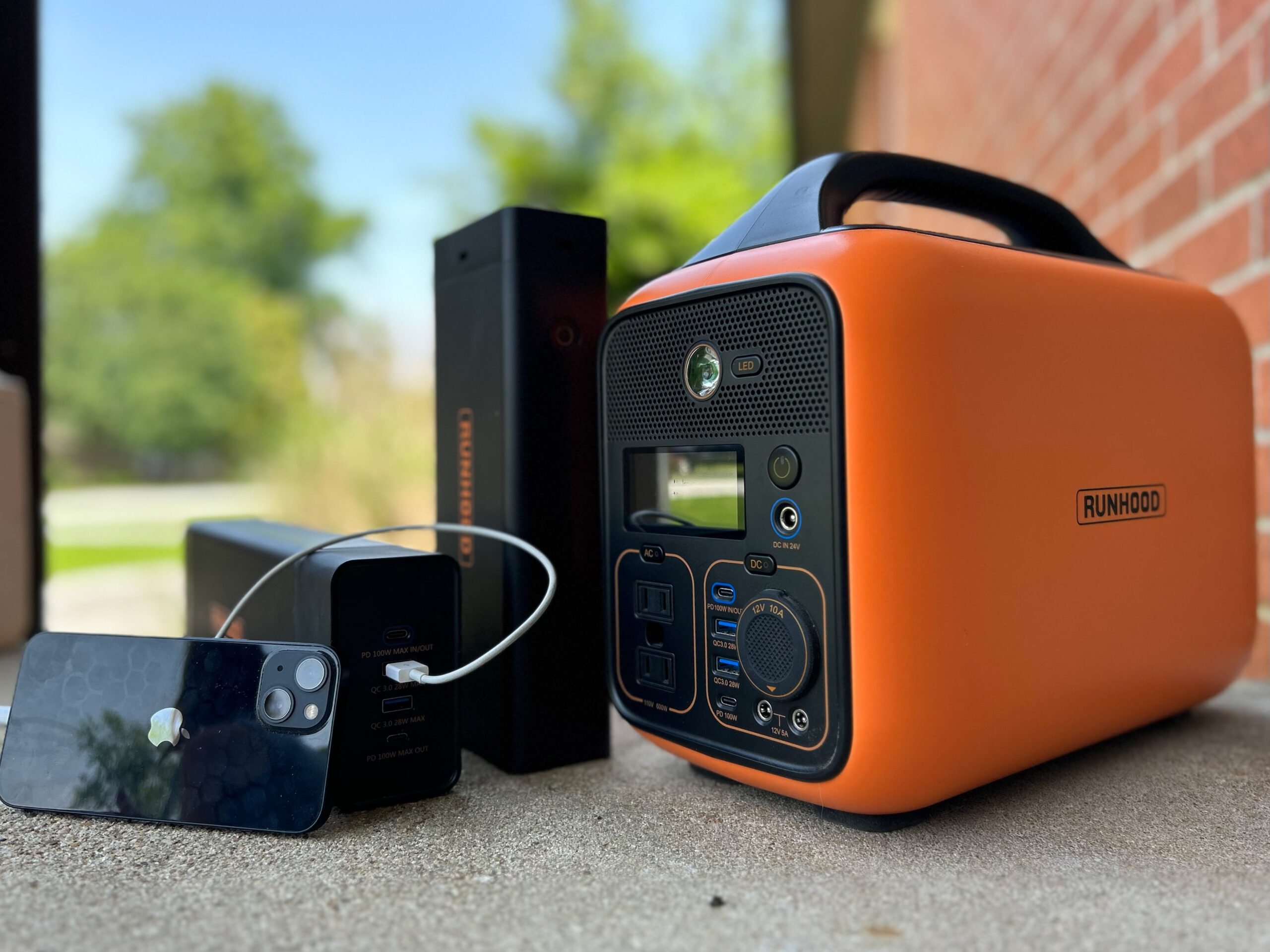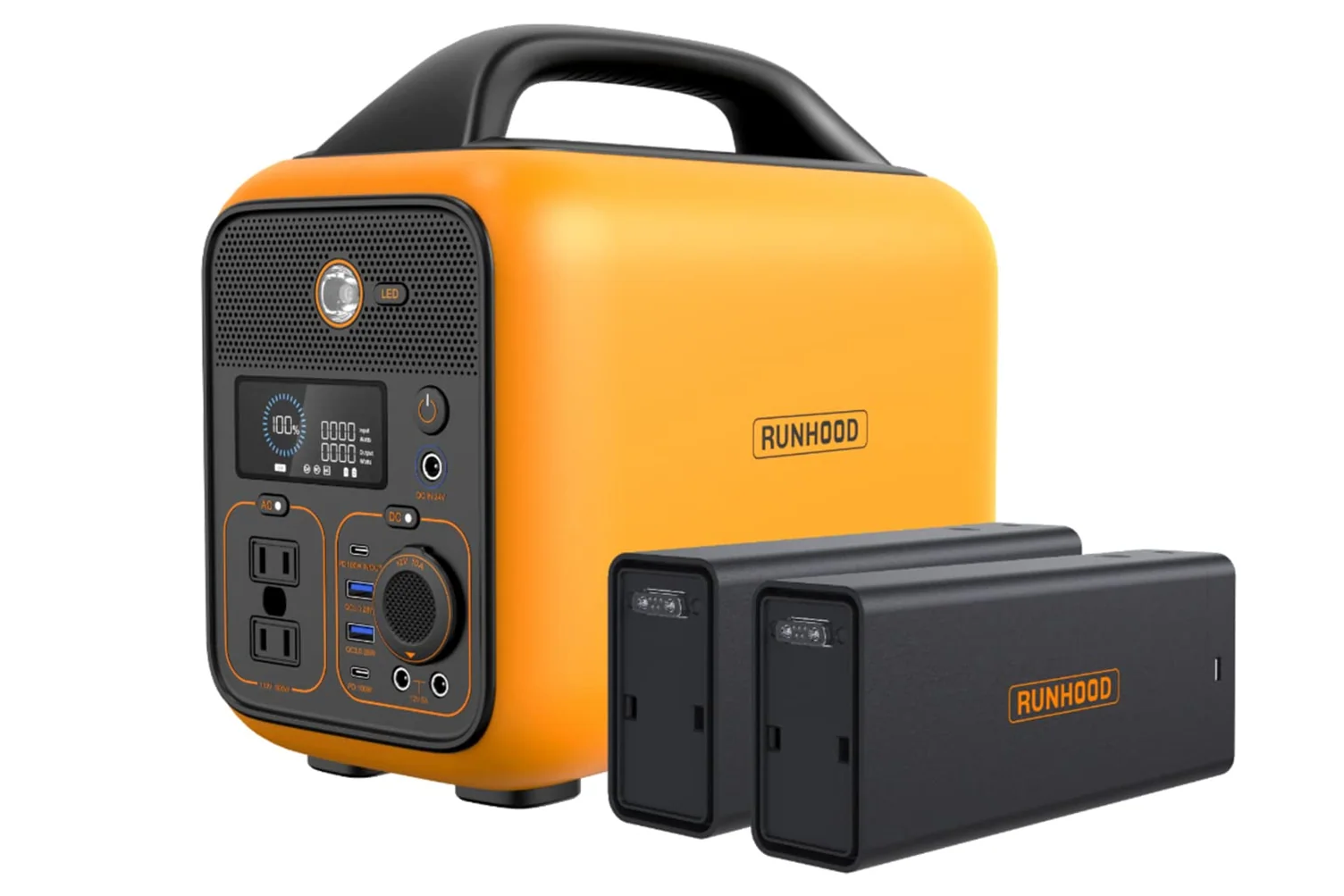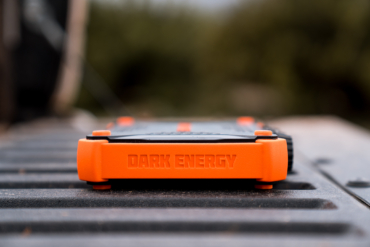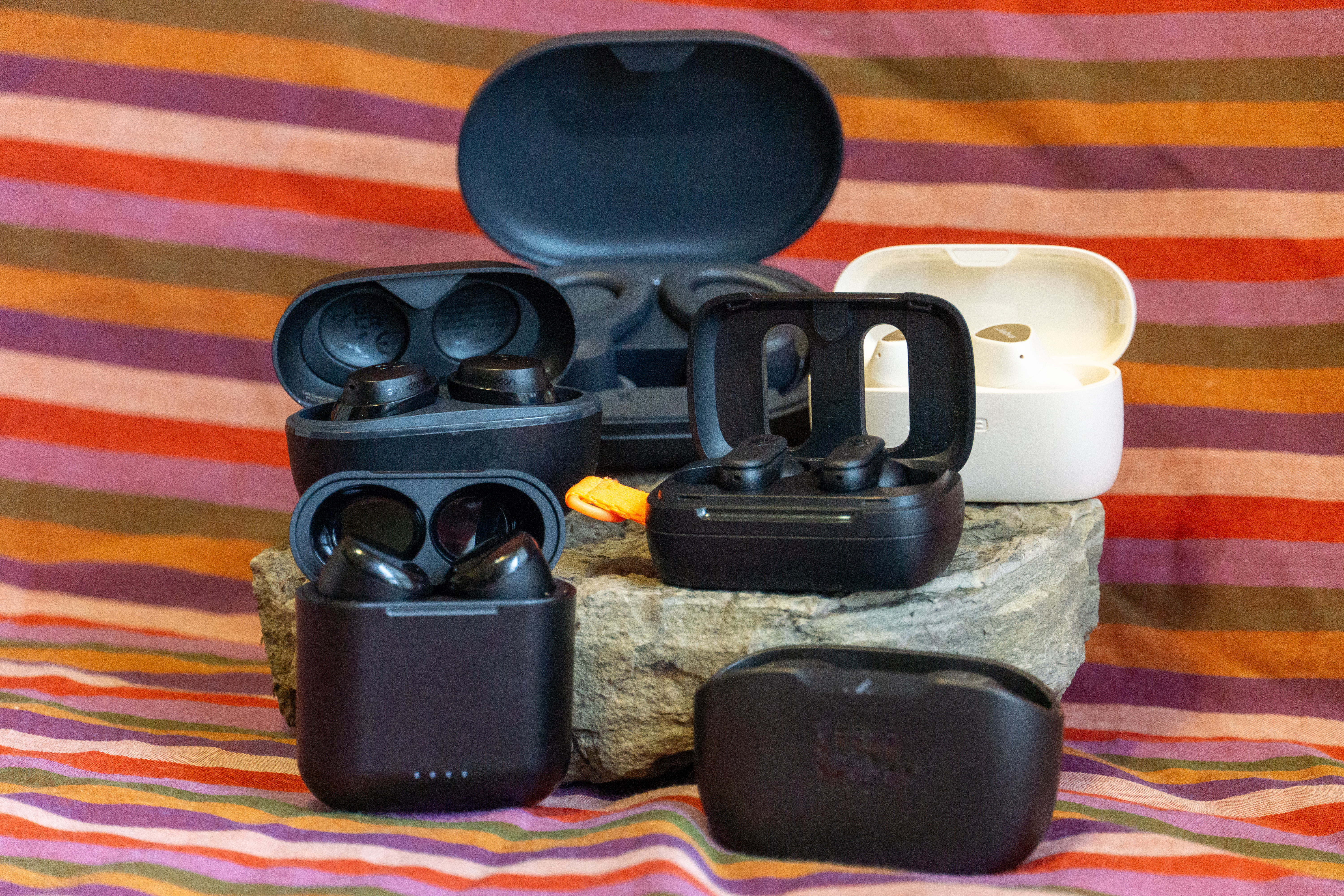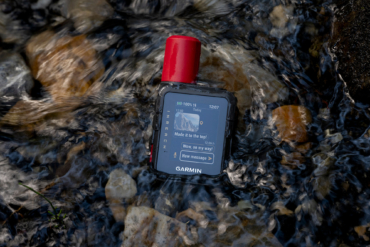Power stations are great until they’re dead. And once they’re dead, well, it’s just a heavy box. Plus, you’re back to being the kind of person you were before you first bought a power station — that is, someone in need of portable power.
If only your power station had a backup power station — that’s the eureka idea behind the Runhood RALLYE Pro 600 modular power station. Not only does the RALLYE 600 run on dual, swappable batteries, but those batteries also work independently outside of the power station. In other words, you can combine multiple small power stations into one large power station — Eureka!
I’ve been testing the Runhood RALLYE 600 Pro for 6 months, across three seasons, for home, mobile office, and outdoor uses.
In short: Don’t be afraid of this little-known brand. Runhood was founded in 2021 in California, and the RALLYE 600 modular power station is its debut product. Though knockoffs of poor quality abound in the power station space, the Runhood RALLYE 600 Pro delivers the goods. This unparalleled power station design proved more versatile than any other power bank or station I’ve tested. It excels at versatility and longevity, with batteries you can use alone for portability, or as replacements for spent batteries for extended power needs. The only drawback is the investment, which is not insignificant. But Runhood offers various options to suit various budgets and remains competitively priced against bigger names in the power space.
- Power station capacity: 600W (w/two Energy bars)
- Ports::
- – 2x AC 110V 600W:
- – 1x 12V 10A 120W max car port (in/out):
- – 2x DC 12V 5A 60W, total 120W:
- – 2x USB-A QC 3.0 28W max, total 56W:
- – 2x USB-C PD 100W max, total 200W (1x in/out):
- – Solar panel 15V-23V 10A max, MPPT supported (in):
- – 1x Adapter 180W (in):
- Energy bars: 324 Wh ea.
- Built-in LED flashlight:
- Price: $1,199 (PRO w/solar panels, 4 Energy Bars, portable AC connector, portable USB connector) / $699 (power station only w/two Energy Bars)
Pros
- Modular design allows semi-customization for a range of uses
- Very long battery life with added Energy Bars
- Extremely portable compared to similar output alternatives
Cons
- Small display
- Several add-ons to invest in to maximize utility
Runhood RALLYE PRO Review
How It Works
To start, we need to cover some terms. Runhood has a variety of gadgets that can work independently or in tandem, based on your needs. I’ll be addressing each of these components, so it’s good to understand what each means.

- Host Engine: This is what you’d call the “power station.” It’s the big power generator, has a variety of ports to charge an array of devices, and largely operates like other power stations.
- Energy Bars: These long blocks are basically big batteries. They give power to the Host Engine, but unlike other power stations, these batteries can be removed and used independently of the Host Engine, provided you have a Connector Engine (see below).
- Connector Engine: These are adapters that plug into an Energy Bar to create a mini power station or power bank. There are two Connector Engines: a 110V AC Engine, and a 256W DC Engine for USB charging.
For clarity, I tested the Runhood RALLYE 600 PRO ($1,199), which includes everything in the portable power lineup: a packable solar array, two extra energy bars (four total), and two connector engines. If it sounds a little complex, it isn’t. It’s just very different than your typical power station setup.
You could, in theory, just invest in the Runhood RALLYE 600 power station alone. But that largely defeats the purpose (unless you intend to buy add-ons in the future). The key selling point of this device is its modularity. So you’ll need the mods to really take advantage of that.
Runhood sells a few different setups, so you don’t have to go all in. For example, you could forego solar panels and buy a RALLYE MAX ($999), including a host engine, four energy bars, and connector engines. Or, you could buy a host engine ($299), one energy bar ($219), and the DC connector engine ($75). In that case, you’d have all the power station charging options and the portability of a simple on-the-go power bank.
You can mix and match however you see fit. At a minimum, I think you get the most bang for your buck with the host engine, two energy bars, and the DC connector engine. This affords a lot of flexibility with portability and overall battery life.
RALLYE 600 Power Station
Let’s start by diving into the RALLYE 600’s main configuration, as a power station with the host engine and two energy bars plugged in. This setup packs 648 Wh of power.
The closest competitors carry about 500 Wh — like the Goal Zero Yeti 500x, or the Blackfire PAC505. The RALLYE 600 has a slightly larger overall profile and carries a bit more weight. That said, the ergonomics Runhood designed here are fantastic. The RALLYE carries more like a svelte briefcase than a blocky power station.

Its port options are nearly identical to the aforementioned competition: two USB-C ports, two USB-A ports, a DC car port, 24V DC input (solar or grid power), and two AC outlets.
However, the stacked orientation of these AC outlets means you can only use one three-prong plug at a time, so it’s more like a single AC outlet. I don’t love this layout, but it makes for very efficient use of limited space. This was not a deal-breaker for me, but it could prove frustrating if you have multiple three-prong devices.
The RALLYE also offers dual 12V 5A ports. Those are not common but may be handy for devices like portable projectors when other ports are in use.
Finally, the display. It is small and can be difficult to read at an angle. However, it’s plenty well illuminated to read in bright sun. It’s also very clean and easy to interpret, showing hours of remaining charge, percent of battery life, plus the power level of each energy bar. And, of course, total output and input watts. And there’s a built-in LED flashlight, because why not?
Runhood Power Station Test
Compared to other power stations I’ve tested, the RALLYE 600 is actually the easiest to use. That may come as a surprise, given all the modularity options noted above. But with its energy bars plugged in and a full charge, this power station is basically idiot-proof.
The main power button is large and easy to see. Turn it on, then press the DC or AC button to power the ports you want to use. These are clearly marked and grouped together, so it’s nearly impossible to miss. Unlike other power stations, there are no extraneous buttons to confuse the user — like “Display,” “Units,” or “Info” buttons that appear on other brands.
I’ve used the RALLYE 600 to power a laptop and charge damn near everything I own — iPhone, Bluetooth speakers, headlamps, earbuds, and more. As you’d expect, this all worked without issue.
For fun, I also tried plugging in a weed whipper to really push the limits. This overloaded the AC capacity and alerted me with a steady beeping. Resetting the power was easy with a single press of the AC button.
As for fan noise, when you really have a steady draw — as with a laptop — the fan will kick on. The noise is acceptable and soft, if still audible.
When the RALLYE 600 drops below 5% battery, it will issue a warning beep. I found this a little annoying, but also recognize it’s good to know exactly when the power station is about to run out of juice, since you’re not typically watching over it.
A full recharge for both energy bars inside the RALLYE 600 takes about 3 hours on grid power. The recharge time is also displayed on the screen when you plug it in.
Runhood Energy Bars
Runhood might want to dive into the nutrition game because its “energy bars” are on point! A truly clever and useful design, these batteries steal the show.
Inserting and removing them from the host engine is simple. A button marked “Open” over each compartment unlocks the energy bar. Slide the bars out to use (or charge) them independently of the host engine. Slide them in with the marked arrow pointing up, and it’ll snap right into place. Nothing bad happens if you insert the bar upside-down; it just won’t seat and you’ll know to turn it over.
First, charging — this can be done either while the bars are slotted into the host engine, or outside of it. When charging inside, simply connect the host engine to the solar array or directly to a home outlet with the included charging cable. This charges both batteries in turn.
To charge outside the host engine, remove the battery and slap on the DC connector engine. This connector has two USB-A and two USB-C ports, one of which supports 100W input. Plug this into grid power and juice up.
Additionally, each energy bar has five white lights to signify its individual charge (one light = low, all five lights = full charge).
Energy Bar Test
The ability to remove and use and charge the energy bars independently of the host engine is twofold.
First, it enables a much longer overall charging capacity with backup energy bars. With four bars, you could have two working inside the host engine, powering devices. When they reach full discharge, swap in the two backups and keep going. Plus, you can recharge the spent energy bars and keep going to infinity (or until the second law of thermodynamics inevitably catches up).
Second, each bar serves as its own portable power bank. For this, you need a connector engine — one serves AC needs (traditional prong outlets) and the other DC (USB-A and USB-C).

For me, this has been the standout feature of Runhood’s design. It elevates the RALLYE 600 from a car camping staple that’s too bulky for daily use to a versatile power solution you can carry almost anywhere. At 10 inches long and 4 inches wide, the energy bar fits perfectly in the water bottle pocket of a backpack. Each bar weighs about 4 pounds.
By itself, the energy bar packs 324 Wh / 9,000 mAh capacity, which is enough to fully recharge an iPhone 14 a few times over. Or, in my particular test, I kept a pair of Bluetooth headphones, an iPhone, and a MacBook Air charged up during a workday at a coffee shop.
Solar Panels
The last piece of the Runhood RALLYE 600 PRO package is the solar panel array. This array generates 100 W of power, operating at 18 V with a working current of 5.5 A. Most importantly, Runhood constructed the panels with monocrystalline silicon, giving it a claimed 23% efficiency — among the most efficient panels available today.
Packed down, it measures 14 inches by 14 inches square (about 2 inches deep). Altogether, the six-panel array — with all necessary cables — weighs about 8.5 pounds.
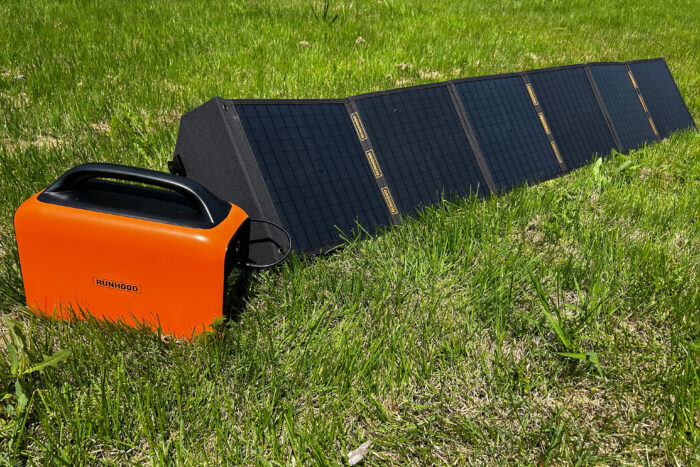
I used the solar panels about five times over the course of testing. It is definitely a useful accessory, especially if you’re off-grid. But it is not a miracle solution to recharging the RALLYE 600 in the wild. In relatively full sun, two fully discharged batteries still took several hours to fully power up — and during overcast times of the year, you can pretty much abandon hope of a full recharge.
Still, the panels are very easy to use, no prior familiarity with solar arrays is necessary to use them. And you can parallel a second array to double the amount of photons you convert into useful energy. What’s more, the entire array is IPX6 waterproof, so you won’t lose your investment if a surprise thunderstorm douses your camp.
Runhood RALLYE 600 PRO: Conclusion
Across three seasons of testing, in various environs and with various demands, the RALLYE 600 has excelled for me. It is among the most simple and dependable options I’ve tried, and I’ve tried all the big names.
If there’s a knock against this product, it’s that Runhood is not a well-known name. And in a category rife with cheap knockoffs and questionable customer service and longevity, you’d be forgiven for hesitating on dumping hundreds of dollars on the RALLYE 600 suite of products. And I’ll be honest, the site could use some love and attention to give the brand a better appearance for the casual shopper.
However, my tests have allayed many of the fears I would harbor before investing in a portable power solution. And while the RALLYE does not out-compete the competitors on price at first glance, its versatility across home, camp, and around-town needs make it an attractive value.
And yes, there are a number of oddly named accessories to navigate. But the learning curve is shallow and the devices intuitive. Plus, Runhood’s à la carte options mean you can only invest in what you think you’ll need. If camp excursions are your primary use for a power station, I’d advise going for solar panels and two or more energy bars.
If you typically focus on backyard activities and trips to the coffee shop, then the RALLYE 600, a couple of energy bars, and a DC connector engine give you a great start.
All in all, the Runhood RALLYE 600 PRO suite of products represents a truly innovative option in a category flooded with sameness.
